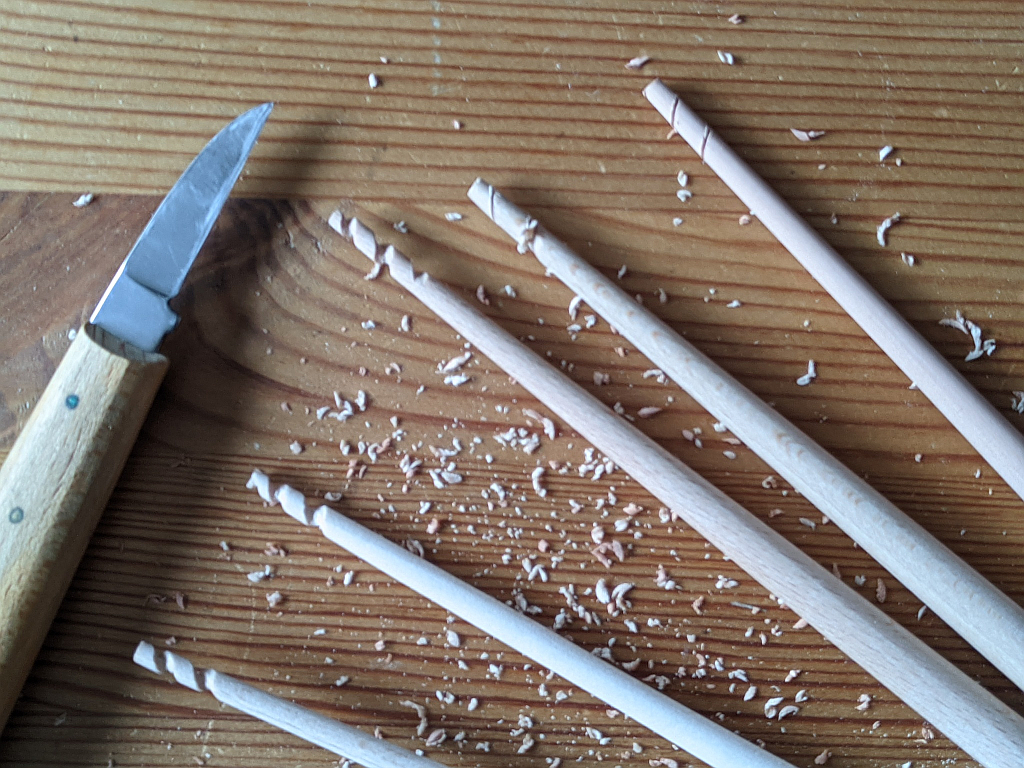It's not just textile work in the sense of handling fibres here - there's also tool preparation. Such as prepping distaffs for people who order my historical spinning kit with dressed distaff, or cutting notches into spindles.
The latter requires some nice, sharp tools, some courage, and a bit of patience. And, of course, spindle sticks to cut the notches into.
There's not too many finds of complete spindle sticks from the Middle Ages, and those are usually without notches. However... we do have some finds with notches, and we have plenty of sticks with broken-off ends, which of course happens more easily if there's a weak point in the wood. As in... a notch.
So like in many, many other cases, we have a hard time finding things out for sure.
Personally, I am ambiguous about notches. Having them can be nice, and spinning with them is fun if you just sort of slot your yarn in without the need of doing a half-hitch. They are also very good to have if, for whatever reason, your yarn keeps slipping off otherwise. (When I did the membrane thread spinning, I found that no notch was a no-go for me; this is the one technique where I absolutely want a nice, deep horizontal notch to put my half-hitch in.) But they will limit you in other ways - a horizontal notch means you can spin s or z, but you still need a half-hitch, and it will hold that securely even when you want to take it off for winding. A spiral or diagonal notch means you can spin without a half-hitch... usually. Unless your yarn is too thick, or you fumble, then your spindle will fall; plus this kind of notch limits you to one spin direction.
But there's plenty of people who will appreciate a notch of this or that kind, and I am thoroughly fine with that. So fine that I will happily provide the notches:
In this case, the long spiral ones, worked in the different kinds of wood. They look pretty, don't they?
